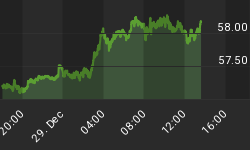Market Summary
All the major indexes traded flat for the week basically finishing where they started.

A standard chart that we use to help confirm the overall market trend is the Momentum Factor ETF (MTUM) chart. Momentum Factor ETF is an investment that seeks to track the investment results of an index composed of U.S. large- and mid-capitalization stocks exhibiting relatively higher price momentum. This type of momentum fund is considered a reliable proxy for the general stock market trend. We prefer to use the Heikin-Ashi format to display the Momentum Factor ETF. Heikin-Ashi candlestick charts are designed to filter out volatility in an effort to better capture the true trend. The updated chart below recognizes recent daily digit-digit moves and shows stocks settling into a trading range.

The American Association of Individual Investors (AAII) Sentiment Survey measures the percentage of individual investors who are bullish, bearish, and neutral on the stock market for the next six months; individuals are polled from the ranks of the AAII membership on a weekly basis. The current survey result is for the week ending 09/28/2016. The percentage of individual investors expecting stock prices to rise is down for a third consecutive week. Neutral sentiment rose, while pessimism pulled back. Bullish sentiment, expectations that stock prices will rise over the next six months, declined 0.8 percentage points to 24.0%. Optimism was last lower on June 22, 2016 (22.0%). This is the 47th consecutive week and the 80th out of the past 82 weeks with a bullish sentiment reading below its historical average of 38.5%. Neutral sentiment, expectations that stock prices will stay essentially unchanged over the next six months, rose 2.0 percentage points to 38.9%. The increase puts neutral sentiment above its historical average of 31.0% for the 35th consecutive week. Bearish sentiment, expectations that stock prices will fall over the next six months, pulled back by 1.2 percentage points to 37.1%. Pessimism is above its historical average of 30.5% for the third consecutive week and the fourth time in five weeks. This is the sixth consecutive week with fewer than three out of 10 individual investors expressing optimism about the short-term direction of stock prices. It is also the third consecutive week that bullish sentiment is at an unusually low level (more than one standard deviation below average). The typical long-term range for optimism is 28.1% to 48.7%.

Trading Strategy
As seen in the updated chart below, Technology, Energy and Utilities are the only major S&P ETF sectors in the black over the past month. As reported by Jeff Hirsh in the Stock Trader's Almanac, the first trading day of October is the one of the worst of all monthly first trading days since September 1997. Only September, August and June have been weaker. S&P 500 has been down 10 of the last 21 years on the first trading day of October. The DOW's is even weaker with 11 declines and NASDAQ has the worst record of the group, down 12 times with an average loss of 0.44%. It looks like volatility has returned as the market experienced daily triple-digit moves every day this week. Expanding exit points is smart to limit getting stopped out before trades have an opportunity to play out.

Feel free to contact me with questions,
















